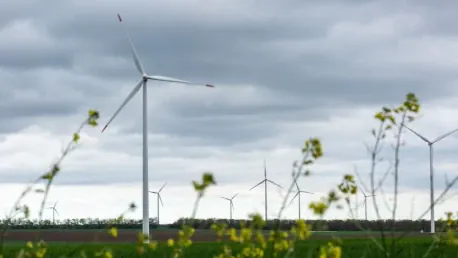The recent acquisition by OX2 of an onshore wind power project in Australia marks a significant milestone in both the company’s expansion and Australia’s renewable energy landscape. Planned to reach a total installed capacity of 1 GW, the project stands to be a transformative influence on local energy supply, industry trends, and long-term sustainability goals. This comprehensive examination of the project’s impact aims to shed light on the broader implications for the Australian energy market.
Expansion of Renewable Energy Capacity
OX2’s ambitious 1 GW wind power project introduces a substantial increase in Australia’s renewable energy capacity. With Australia striving to meet its renewable energy targets, this addition is a critical step forward. The project contributes a significant portion to the national grid, helping reduce reliance on fossil fuels and enhance clean energy sources. As Australia edges toward its renewable energy goals, larger-scale ventures like this are crucial in ensuring a stable and sustainable energy future.
Moreover, the inclusion of a 100 MW battery energy storage system in the project will amplify its impact by providing stability and resilience to the energy supply. Energy storage systems are vital for managing the intermittent nature of renewable energy production, ensuring that power generated during windy periods can be stored and used when needed, thereby balancing supply and demand more effectively. In turn, this could also minimize the potential for energy shortages and reduce the strain on the existing grid infrastructure during peak usage times.
The integration of significant battery storage underscores the project’s dual focus on generating clean energy and providing robust energy management solutions. This approach not only maximizes the utility of the generated wind power but also exemplifies a forward-thinking strategy in renewable energy development. It contributes to addressing one of the major challenges of renewable energy—its intermittent nature—while supporting grid stability and reliability for consumers and businesses alike.
Economic and Environmental Benefits
The development of OX2’s onshore wind project promises extensive economic benefits for the region. During the construction phase, it will generate a significant number of jobs, providing a boost to local economies. Direct employment opportunities in sectors like construction, engineering, and project management will be supplemented by indirect jobs supported in associated industries. This influx of activity can rejuvenate local businesses, drive demand for services and goods, and create a broader economic ripple effect.
Long-term operational and maintenance roles will also contribute to sustained employment opportunities. These positions are critical for the ongoing efficiency and reliability of the wind farm, ensuring that it continues to operate at optimal capacity. The steady presence of these roles over the lifespan of the project ensures a continued economic stimulus beyond the initial construction phase, presenting long-term benefits for the community.
From an environmental perspective, the project plays a crucial role in reducing greenhouse gas emissions and mitigating climate change effects. By displacing fossil-fuel-based power generation, the wind project reduces the carbon footprint of Australia’s energy sector. This aligns with both national and global commitments to combat climate change and transition to a low-carbon economy. Lower emissions translate to improved air quality and environmental health, providing tangible benefits for public health and the ecosystem.
Collaborative Development and Local Engagement
A noteworthy feature of the project is its collaborative development approach. OX2 has chosen to work closely with the original project developers and over 20 local landowners, ensuring a seamless transition and ongoing support for the development phases. This collaboration is essential for navigating regulatory approvals, community engagement, and environmental assessments. Engaging local talent and expertise from the outset reinforces the project’s integration into the community and enhances its chances of success.
Engaging local stakeholders from the outset not only secures essential buy-in but also helps address community concerns and incorporate local knowledge into the project design. This inclusive approach fosters a sense of ownership and partnership, which is pivotal for the long-term success and acceptance of large-scale renewable energy projects. Effective communication and transparent processes can help mitigate potential opposition, streamline approval processes, and ensure that the project aligns with local needs and expectations.
Furthermore, the collaborative model promotes the sharing of valuable insights and experiences between OX2 and the local community. It facilitates a learning environment where best practices can be shared, improving the efficiency and effectiveness of subsequent stages of the project. It also sets a positive precedent for future developments, demonstrating the viability and benefits of inclusive, community-centered renewable energy projects.
Strategic Positioning and Market Influence
OX2’s recent acquisition of an onshore wind power project in Australia marks a major milestone, not just for the company’s growth, but also for the country’s renewable energy sector. This project, which is set to achieve a total installed capacity of 1 GW, promises to significantly impact local energy supply, shape industry trends, and advance long-term sustainability goals. Considering the increasing global push towards greener energy solutions, this development is especially noteworthy. The project has the potential to transform Australia’s energy market, reducing dependence on fossil fuels and steering the nation towards a more sustainable future. The initiative also reflects OX2’s commitment to expanding its renewable energy portfolio, while providing a model for other businesses to emulate. Additionally, the project will likely create numerous job opportunities and stimulate local economies, offering a ripple effect that extends beyond just energy production. This comprehensive overview seeks to highlight the far-reaching implications for not only Australia’s energy landscape but also global renewable energy trends.









